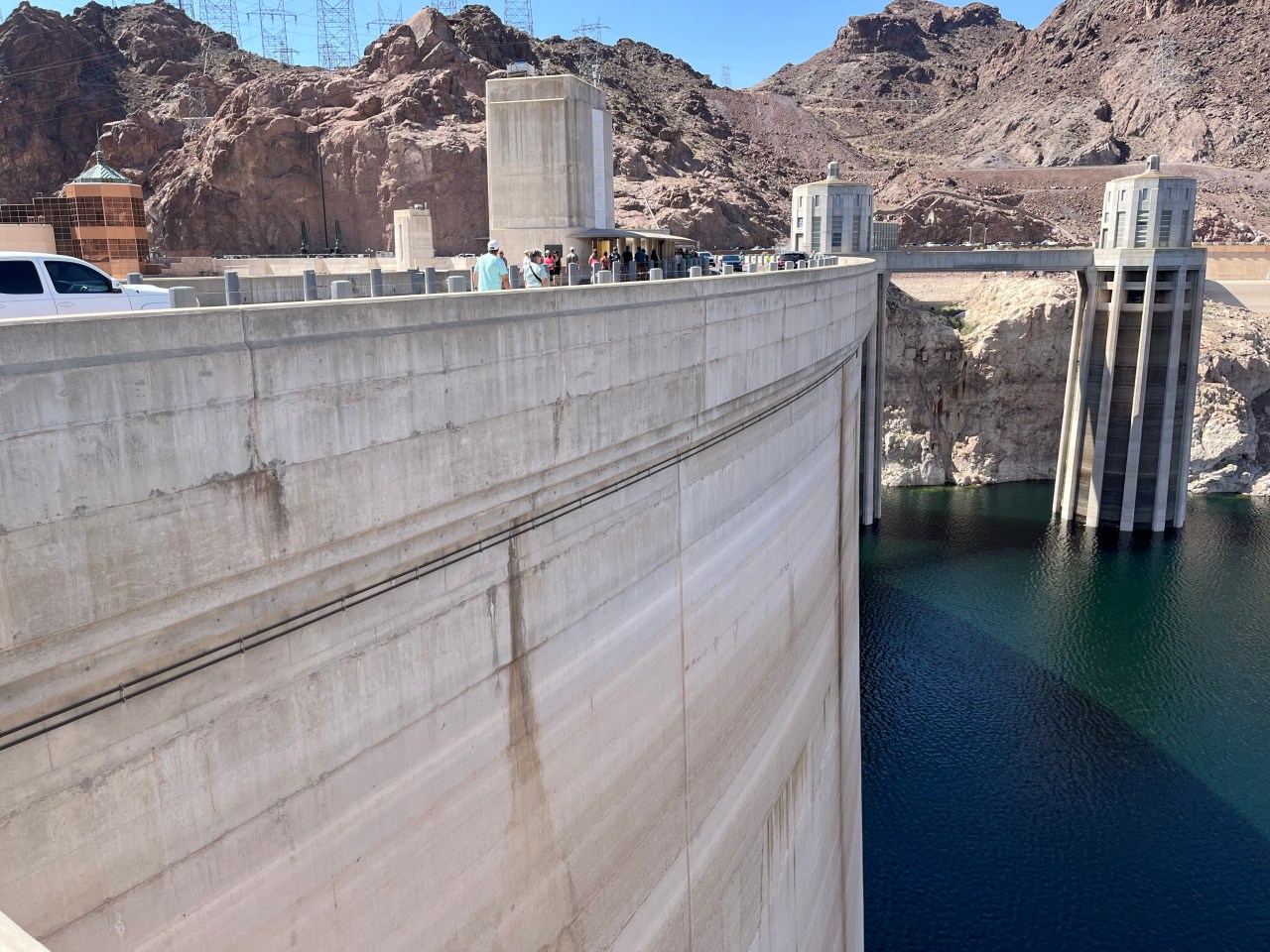LAS VEGAS (KLAS) — Each year around the middle of August, the federal government looks at projections for Lake Mead to decide on adjustments to water restrictions for Southern Nevada, Arizona and California.
Currently, a Tier 1 water shortage is in place, and Southern Nevada is getting 7% less than its full allocation from the Colorado River.
The U.S. Bureau of Reclamation looks ahead about 4½ months to the expected level on Jan. 1 — or the end of December, as reflected in charts released in each month’s “24-month study.” As of noon on Monday, Lake Mead was at 1,054.45 feet (altitude: the lake’s surface compared to sea level). If projections indicate the lake will be lower than 1,050 feet on Jan. 1, there would be more water cuts.
It looks like we’re in the clear this year. July projections show the lake at 1,055.78 feet, but it’s the August projections that will matter.
Reliable projections?
But can you really trust the government to get it right? Can’t things change for the worse by the end of the year?
8 News Now looked at the past 10 years, comparing August’s projection with the actual Lake Mead level on Jan. 1. The Bureau of Reclamation’s “most probable” projection has been within 2 feet 70% of the time, and most of the time the lake is actually higher than expected. The graph below shows that projections have been fairly close in good years and bad.
The projections aren’t perfect by any means. Looking two years ahead instead of 4½ months introduces far more volatility into the equation. The 24-month study can help to understand what scientific models show, but the weather doesn’t always do what’s expected.
The sheer scale of water stored in Lake Mead means that missing by a foot means a difference of nearly 25 billion gallons in the Colorado River.
Southern Nevada is allowed 279,000 acre feet under Tier 1 water shortage restrictions. (An acre foot is the amount of water needed to cover an acre of land in water a foot deep — 325,851 gallons.) Because of efficient use and recycling, much less is actually used each year.
California gets 4.4 million acre feet, unaffected by the Tier 1 shortage. Arizona has the biggest cut, losing 512,000 acre feet, or about 30% of its normal allocation. Arizona’s normal allocation is 2.8 million acre feet.
Changing the rules
The three states are making a case to take the emphasis off Lake Mead as the only determining factor in water shortages. Water leaders believe that the contents of the entire river system should be taken into account. After all, the dams above Lake Mead are controlling how much water makes it down the river. There are also pipelines that remove water and take it outside the Colorado River basin for use elsewhere, including the metro Denver area.
Conservation advocates are concerned that there’s no firm plan moving forward, particularly after a winter that brought lower streamflow into Lake Powell.
Rules that are currently in place expire at the end of next year, and the seven Colorado River basin states agree that changes are needed to ensure that the river is managed under new guidelines. The current set of rules went into place in 2007 and has required a number of emergency actions to deal with a drought that is now in its 25th year.
But Arizona, California, Colorado, Nevada, New Mexico, Utah and Wyoming all have an enormous stake.
Talks to come to a common solution have continued behind closed doors.
What happens after Tier 1?
The deepening drought pushed the limits of agreements on water use, and by 2019, the Drought Contingency Plan was in place to guide states through the dry years ahead.
When Lake Mead was projected to drop below 1,075 feet, the federal government declared a Tier 1 water shortage would take effect on Jan. 1, 2022. When August arrived, the government announced that 2023 would bring Tier 2 restrictions. A wet winter fed by atmospheric rivers stocked the Colorado Rockies with snow as 2023 began, and the shortage has held at Tier 1 since Jan. 1, 2024.
The table below from the Southern Nevada Water Authority shows how the tiers affect water restrictions here. (See the column on the right for the total amount).

Tier 1 kicks in at or below 1,075 feet. Tier 2 begins at or below 1,050 feet and Tier 2a comes at or below 1,045 feet. Tier 3 begins at or below 1,025 feet.
Dead pool — the level at which water no longer flows through Hoover Dam — is at 895 feet.
SNWA’s “third straw” is the intake that is currently in use, with water flowing into the Las Vegas valley from pipes at the bottom of Lake Mead. It was finished in 2015. The first two “straws” at Lake Mead are no longer usable because the lake level is too low.

